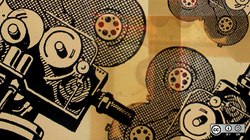How I apply open source principles to filmmaking
On the other hand, film productions often record hours of footage and audio but only use a small percentage of those in the film. Footage that might not have an immediate use for a film's production house can be useful for others. In my case, many interviewed marginalized communities have a moral ownership over the footage. But researchers and others who interview them do not always provide communities with direct and open access. For these ethical and practical reasons, it is a good idea to share footage and the film under an open license and inform the communities interviewed or featured.
There are many reasons filmmakers cannot release films under an open license, but this post is for those who somehow can. I often imagined what the open source equivalent would be for films that adhere to the Openness philosophy. Enter "Open Filmmaking," a framework that encourages releasing the source code of a film, i.e., footage under open licenses, and actively uses other practices such as open source software and open multimedia resources.
In my two recent documentary film projects, "The Volunteer Archivists" and "Nani Ma," I utilized media with open licenses and various open source software (FLOSS). The films explore the areas of citizen science, archiving public domain text, documentation of oral history, and the use of open licenses and open source, as well as volunteerism.

